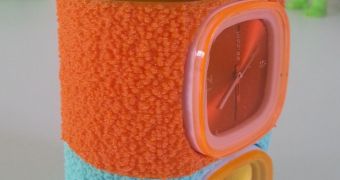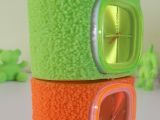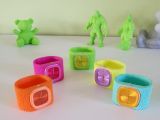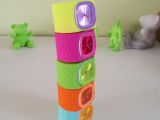You would think that normal 3D printing technologies cannot produce things like sponges and fluffy accessories, or anything similar, and you would be right. Luckily, there are people looking into things besides normal technologies.
One such person is Ignacio Garcia, the founder and CEO of Recreus, a company that became relatively well known some time ago for inventing the FilaFlex flexible filament. Try to say that ten times in quick succession.
The man is a specialist in filament materials and an industrial designer. His background and expertise allowed him to look beyond manufacturing techniques when hoping to produce fuzzy things.
Because 3D printing technologies as they are today weren't meant to make those types of objects we spoke about, special materials can compensate for the drawbacks of FDM, SLA and other techniques.
Long story short, Garcia managed to use “baking texture geometry” and MODO 3D modeling to create fuzzy textures. The FilaFlex filament was used to provide elasticity to each piece of fuzz as it were.
In the attached photos you can see the results: 3D printed fuzzy watches. Garcia used a LEWIHE 3D Printer to produce the straps at 100 mm/s using a layer height of 0.3 mm.
The watch faces were cheap ones he bought off eBay, which he then inserted into the bands, which are flexible and can stretch to an extent. Not surprising. It's not like the FilaFlex material was going to lose elasticity just because the top side was given the texture of a Persian rug.
Who knows, maybe in the future we'll even get to see 3D printed mats and rugs. They may not be that popular in the living room or bedroom, but we can definitely see people buying one or two mats for their bathrooms.
Speaking of things to step on, or into, the CEO of Recreus intends to make some fuzzy 3D printed shoes next. They are said to be quite comfortable to wear, which means, we suppose, that the fuzziness is on the inside. Or maybe both on the inside and on the outside.
Again, the shoes probably won't catch on much, but home slippers or something along similar lines should have a decent marketing success. Then again, it's already been proven that 3D printed shoes can be made to look cool, so it can go either way.
Garcia learned how to model with MODO and the “baking texture geometry” during a course taught by Los Hacedores, a company run by his friend Adam Jorquera. We'll wait and see if he, or they, come up with anything else.

 14 DAY TRIAL //
14 DAY TRIAL // 


